Going into the game no one thought that West Ham, fighting to stay in the top tier, would be the team to cause many defensive struggles to the leaders in Premier League Liverpool. The Hammers penetrated Liverpool’s defence twice and for a moment had the chance in their hands, or as it turned out in Łukasz Fabiański’s hands. The Merseyside team didn’t show any sign of worry and made a turnover (3-2), reaching their 18th consecutive win.
David Moyes’ team showed good defensive discipline and most surprisingly attacking commitment too. They employed a clear marking strategy and used player rotations for opening spaces upfront. Fabianski was highly involved in the ball distribution to the opposition half, trying to help his teammates with the build-up.
Good analysis and a second-half change by Jürgen Klopp had an immediate effect and boosted his team’s performance, leading to a comeback proving Liverpool’s mental superiority once again.
This tactical analysis aims to explore the tactics of both Liverpool and West Ham in their Monday meeting.
Lineups
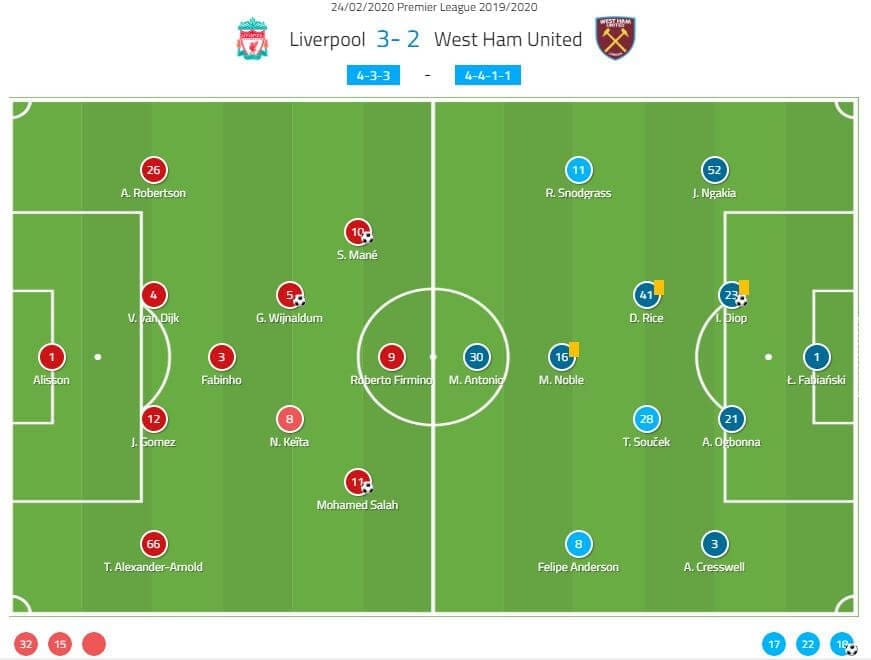
Jürgen Klopp stuck to his favoured 4-3-3. Alisson covered the goal, supported by Andrew Robertson, Virgil van Dijk, Joe Gomez, and Trent Alexander-Arnold. The midfield trio included Georginio Wijnaldum, Fabinho, and Naby Keïta, who replaced the injured Jordan Henderson. Sadio Mané, Roberto Firmino, and Mohamed Salah formed the attacking line.
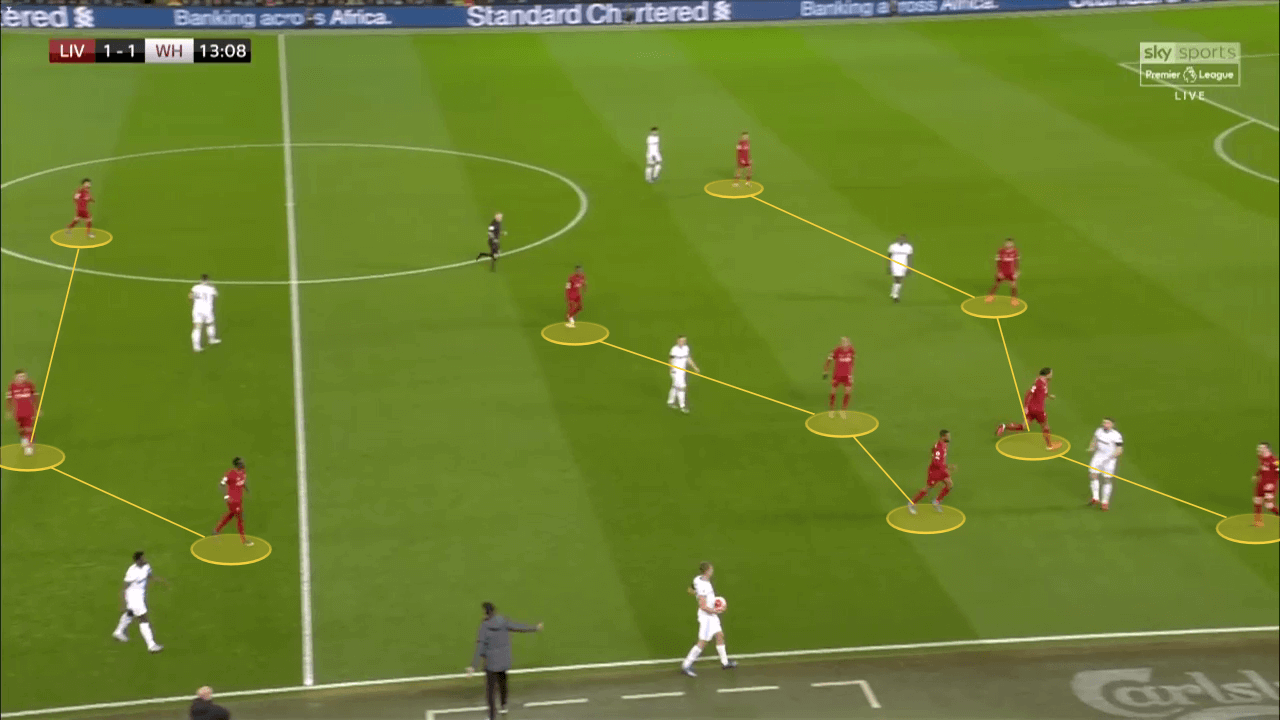
David Moyes opted for 4-4-1-1 out of possession (4-2-3-1 in possession). Łukasz Fabiański was on the goal, with Aaron Cresswell, Angelo Ogbonna, Issa Diop and Jeremy Ngakia in the backline. The double-pivot of Tomáš Souček and Declan Rice served as additional support, backing Felipe Anderson, Mark Noble, and Robert Snodgrass. Michail Antonio was in the role of a lone striker.
West Ham’s attacking commitment
West Ham were unexpectedly brave in their attacking actions and didn’t hesitate to commit bodies in the final third in an effort to break Liverpool’s solid defensive structure. The Hammers used the flanks to advance the ball and relied on player rotations in and around the box in order to open spaces and exploit them.
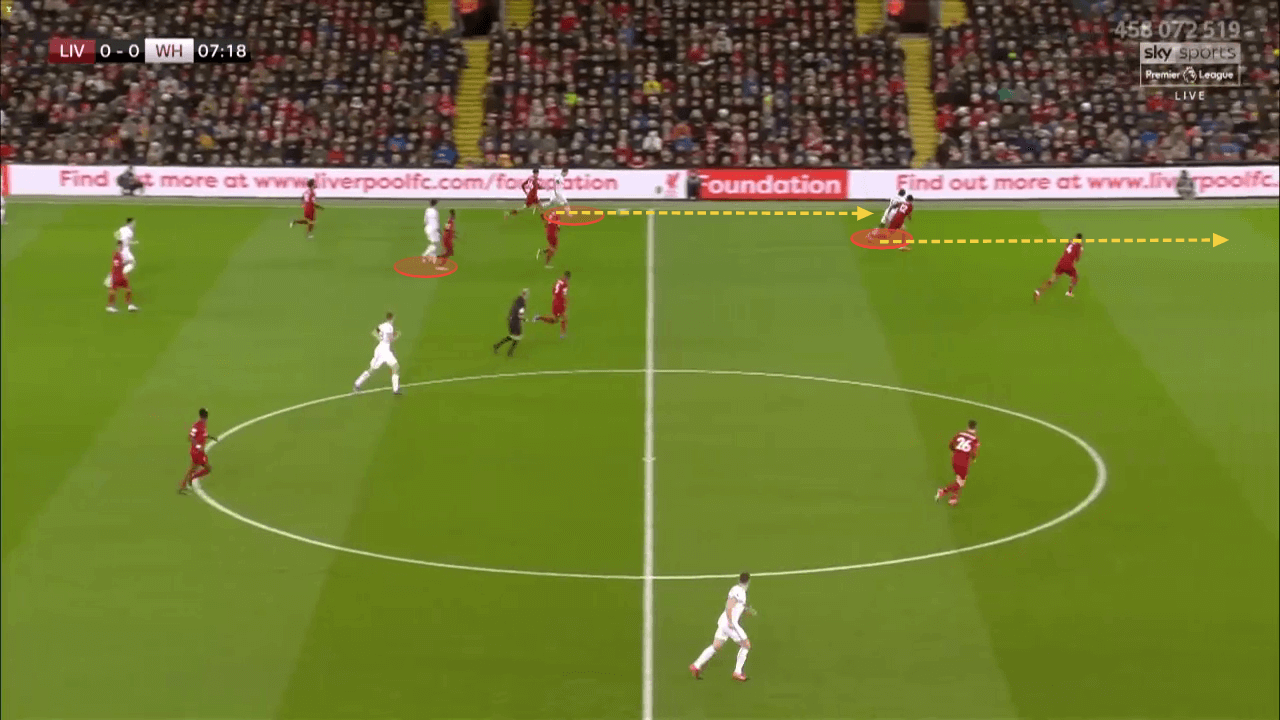
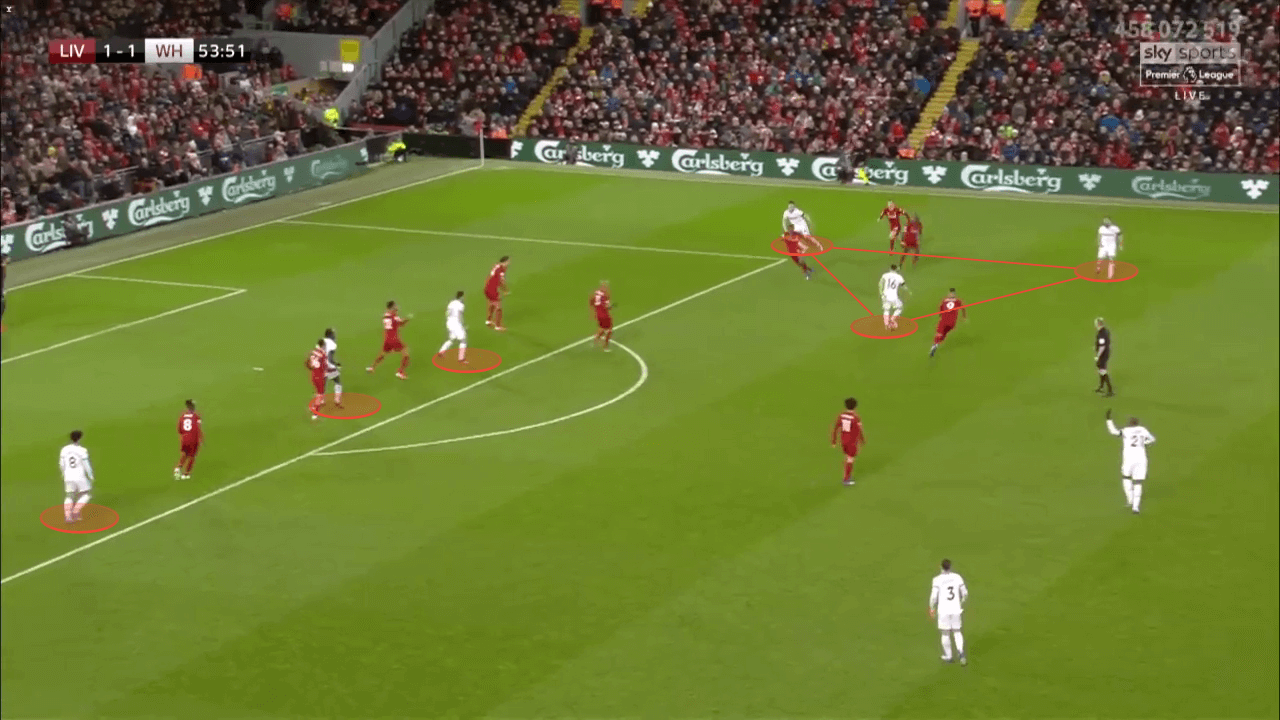
And they did manage to catch their opponents off guard twice. In fact, their efficiency when it comes to forward actions was way higher than Liverpool’s. West Ham created six chances, with four of them being on target. The team performed well on a counter too. Surprisingly they caught the opposition on a counter on four occasions resulting in two shots. Liverpool on the other side created five counterattacks, but none of them was converted into shots.
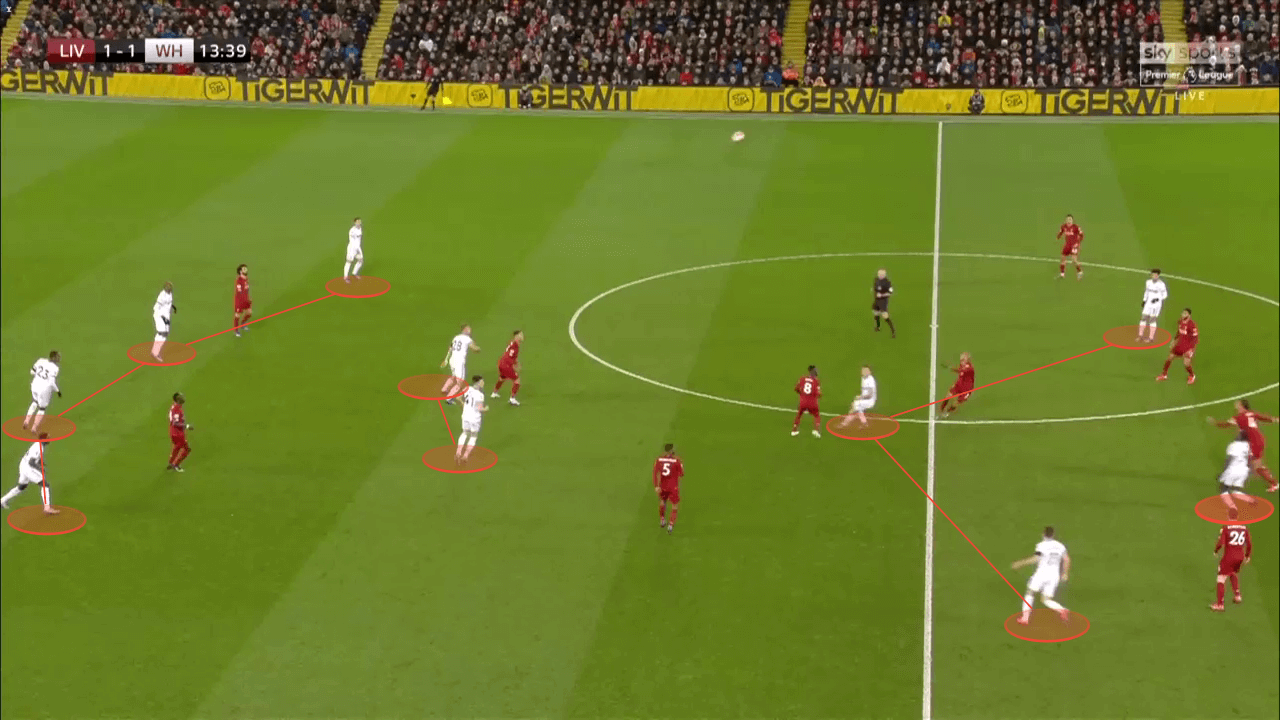
West Ham most frequently sued Antonio for finishing their attacks, who would be supported by Anderson, by switching roles. Their plan was using the full-backs and the wingers for attacking the flanks and frequently cross the ball to the internal players. Later on, Sébastien Haller was brought in, moving centrally, meaning Antonio supported from a wider position.
Moyes’ side were most threatening with attacking set-pieces. They would position in a balanced way and create opportunities using the support of the centre-backs, although the lack of precision and work under pressure affected their end product.
Fabianski was a great contributor to the teams attacking actions. He would only send long balls directly to the opposition half in order to bypass the press and distribute the ball in dangerous areas as quickly as possible.

The Hammers’ defensive actions
The team’s defensive actions included a few components. They noticeably avoided sending the ball back to the defensive players when in possession, in efforts to avoid individual mistakes due to Liverpool’s intensive press. That doesn’t mean that it didn’t affect their performance though since their pass precision was quite low (72,05% pass accuracy).
The only defensive player frequently contributing to the build-up was Cresswell, who was the main passing outlet, serving as an additional passing option and ball distributor too. Despite the full-back position, he wouldn’t go too far up the pitch. It looked like he couldn’t split his responsibilities well, since with focusing on this role in the build-up, his defensive performance dropped, and he often allowed to lose possession of the ball.
Liverpool recovered the ball 104 times, which allowed them to expose West Ham’s defence quite often. Losing the ball in key areas, resulting in them conceding a few dangerous shots. Despite the three goals, the team didn’t have their best night forward. They managed to shoot 21 times, but only six of them ended up on target.
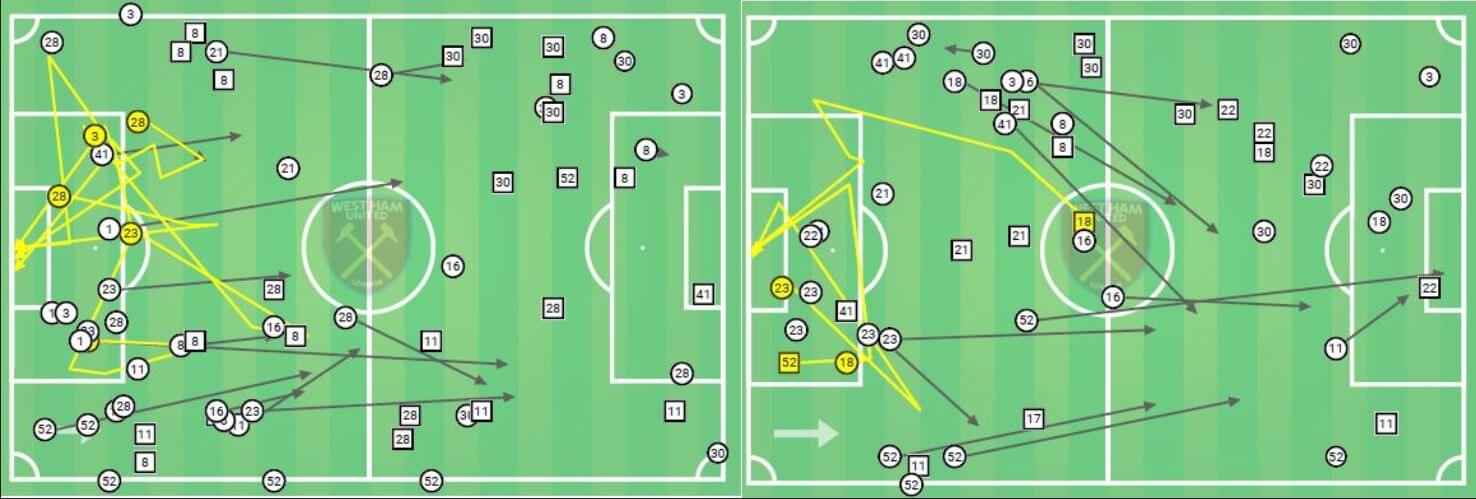
The Hammers’ 4-4-1-1 out of possession was focused on pretty clear roles when it comes to marking. The central players were responsible for covering Liverpool’s midfielders individually. Noble had to follow Fabinho, whilst Rice and Souček were responsible for covering Wijnaldum and Keïta. This forced Liverpool to look for other options in their build-up, although the strong presence on the flangs still allowed them to cross frequently and threaten the goal.
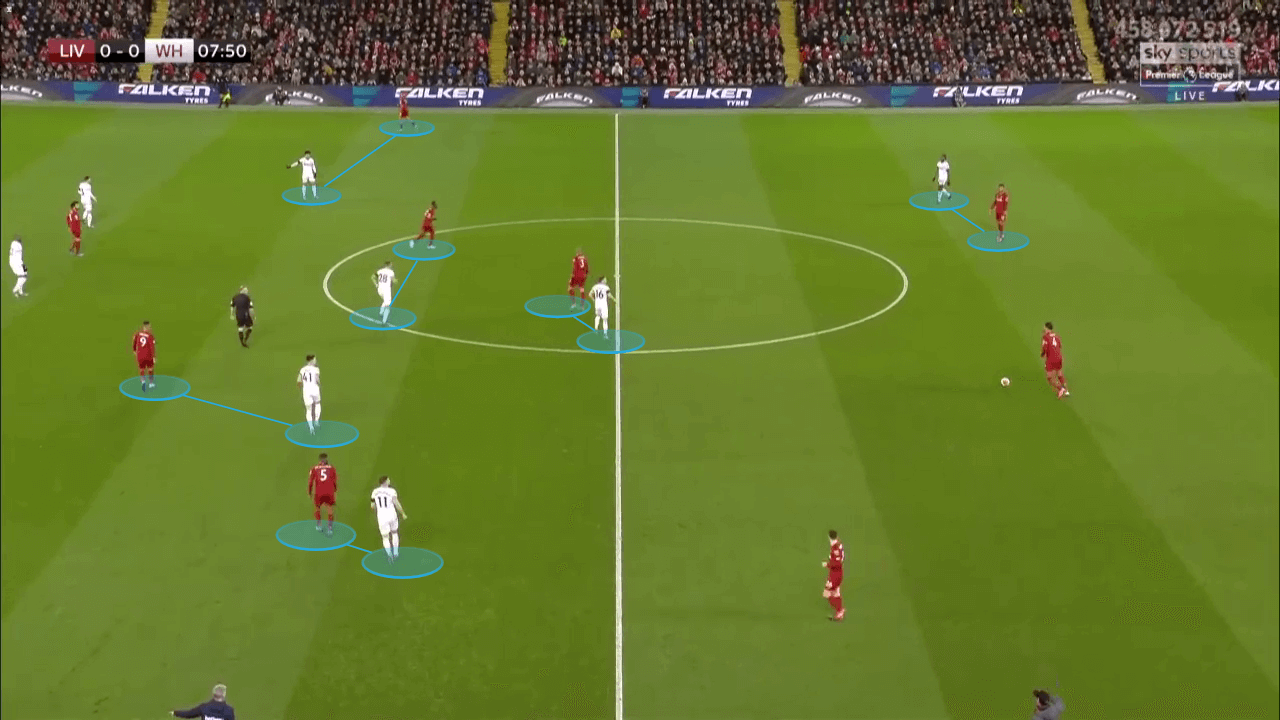
Liverpool’s forward movement and Chamberlain’s impact
Liverpool didn’t do anything out of the usual in their initial attacking approach. Their full-backs were highly positioned as per usual, with Robertson constantly moving on the edge of the final third. Fabinho was the main passing outlet, also helping for retaining possession in the midfield. Liverpool tried to drag players out of position by increasing the distance between each other.
In efforts to break West Ham’s structure and escape their markers, without giving them an option to follow, the Reds would use their midfielders to make runs further than the attacking players. This way they forced the opposition into changing their structure and relocating players.
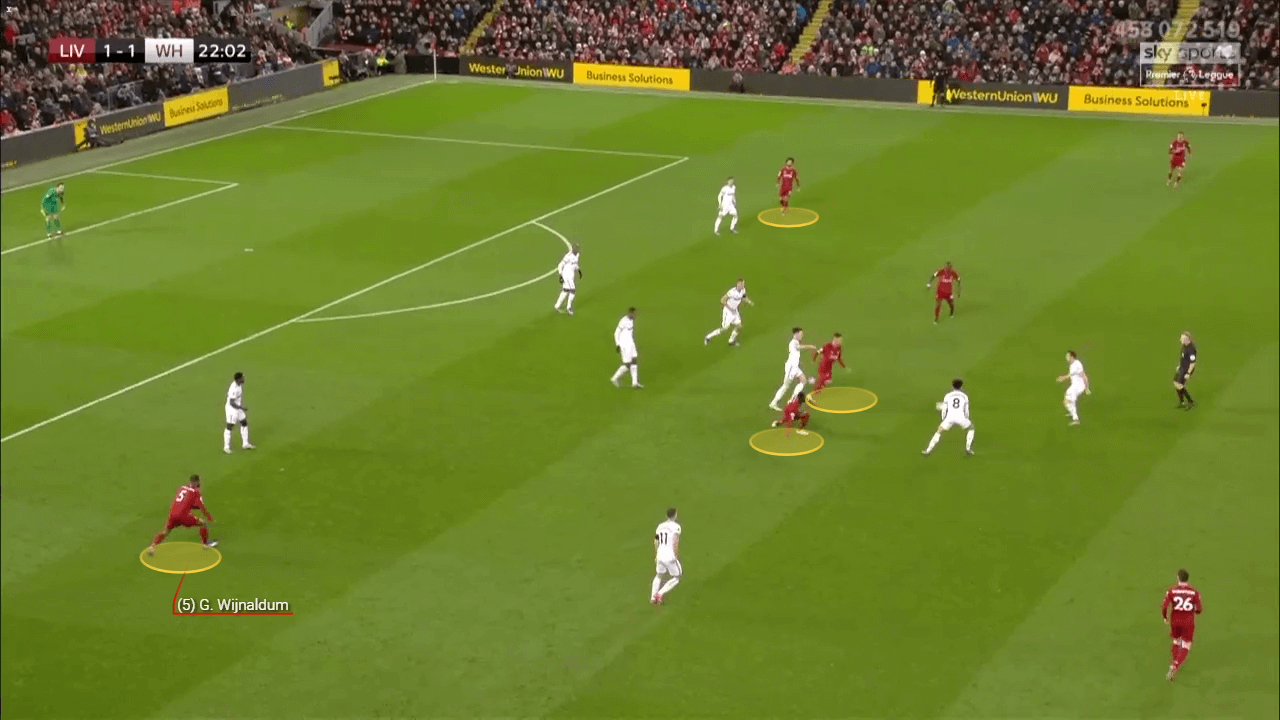
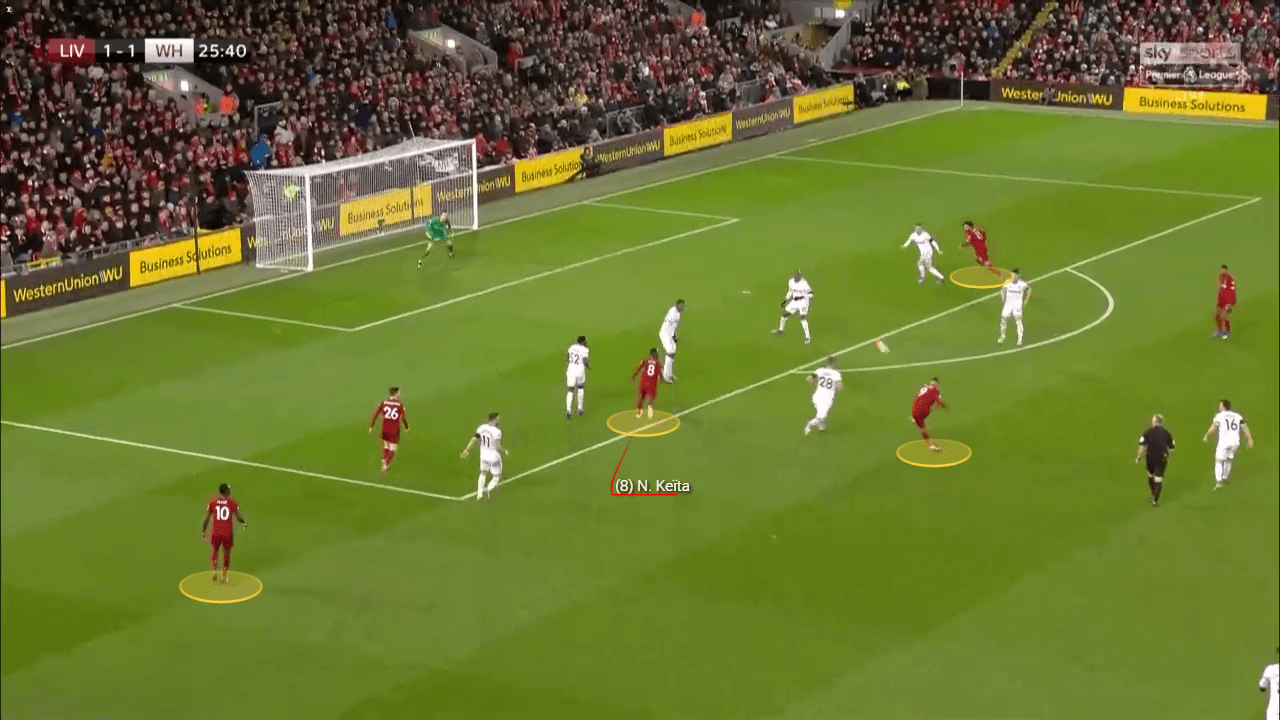
Being 1-1 after the break, Klopp brought in Alex Oxlade-Chamberlain in the search of a more direct attacking approach. They also created overloading in the wide areas dismissing wide-defenders’ actions. Their creativity immediately increased, and they managed to come back from a losing position.
Conclusion
West Ham proved that even team as strong as Liverpool has its flaws, but the Merseyside proved that the big confidence comes with the wins and vice versa. Despite the ups and downs, they kept it all together and didn’t show anything but hustle to turn things over. West Ham couldn’t escape the relegation zone but showed a sign of improvement and Moyes must transfer that performance to their upcoming games if he wants to secure the team a Premier League spot next season.






Comments